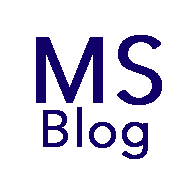Lee Hood, “Systems Biology Approaches to Biology and Disease and the Emergence of Proactive P4 Medicine”
Pittcon 2013: Miniature Mass Spectrometers
American Chemical Society Analytical Division, lectures from Pittcon 2013 in Philadelphia, Pennsylvania on Monday, March 18, 2013.
R Graham Cooks, “Mini Mass Spectrometers: External Ionization & Interfaces”
Daniel Austin, “Converging Ion Traps for Miniaturized Mass Spectrometers”
Guido Verbeck, “Deployable Remote Miniature Cylindrical Ion Trap Mass Spectrometer”
Li Ding, “A Portable VUV Photo-Ionization Digital Ion Trap Mass Spectrometer for VOC Inspection”
Pittcon 2013: Ion Mobility Spectrometry in Pharmaceutical Analysis
American Chemical Society Analytical Division, lectures from Pittcon 2013 in Philadelphia, Pennsylvania on Tuesday, March 19, 2013
Iain Campuzano, “Applications of Ion Mobility, Mass Spectrometry and Quantum Mechanics in Drug Discovery”
Frederick John Antosz, “Applications for Ion Mobility Spectrometry (IMS) in the Pharmaceutical Industry”
Colin Creaser, “Applications of Microscale FAIMS Combined with Mass Spectrometry in Pharmaceutical Analysis”
Alexandre A Shvartsburg, “Advances in FAIMS Technology and Its Bioanalytical Applications”
Pittsburgh Conference Achievement Award 2013
Lectures from the Pittsburgh Conference Achievement Award to Sarah Trimpin, recorded during Pittcon 2013 in Philadelphia, Pennsylvania on Monday, March 18, 2013.
Sarah Trimpin, “New Ionization Methods for Mass Spectrometry for the Characterization of Biological Materials Directly from Surfaces”
Charles McEwen, “Inlet Ionization: Utility and Mechanistic Aspects”
Donald F Hunt, “Innovative Technology for the Identification of Post-Translational Modifications”
Scott McLuckey, “Selective Gas-Phase Ion Chemistries for Mass Spectrometry and Tandem MS”
Many more Pittcon videos are here.
Early Environmental Chemistry, both Industrial and Academic
A lecture by Fred McLafferty on August 18, 2008 at the “Legends of Environmental Chemistry” symposium, 236th ACS National Meeting, Philadelphia, PA.
Electrostatic Particle Trap with Spoons
International Mass Spectrometry Conference 2009
ASMS Indianapolis 2007 Pin
ASMS Nashville 2004 Pin
Connotea is Closing
Connotea, Nature Publishing Group’s reference management website, is closing on March 12.
Pittcon 2012: Imaging Mass Spectrometry
Ron Heeren, “Molecular Signaling Studied with High Resolution Imaging MS”
Dieter Drexler, “Aspects of Imaging Mass Spectrometry in Pharmaceutical Applications”
Kevin L Schey, “‘Seeing’ the Future of MALDI Imaging in Ocular Tissues”
R Graham Cooks, “Imaging Mass Spectrometry: Ambient Tissue Analysis for Cancer Diagnostics”
Pittcon 2012 – Pittsburgh Analytical Chemistry Award
Alan Marshall, “Fourier Transform Ion Cyclotron Resonance Mass Spectrometry: Life as a Target”
Gary Hieftje, “Adventures in Mass Spectrometry”
Evan R Williams, “Electrochemistry and Photochemistry in Mass Spectrometry”
David C Muddiman, “Rational Biomarker Discovery and Validation Using a Systems Approach”
Harold Kroto, “Chemistry in Nano and Outer Space”
Mass Spectrometry WikiMindMap
Mass spectrometry WikiMindMap. Also WikipediaRoll.
Trademark Symbols in Scientific Writing
With the continuous stream of new instruments and techniques in mass spectrometry, it isn’t surprising to see trademark symbols sprinkled liberally about in papers, presentations, and proposals. On the other hand, use of these symbols in non-commercial scientific writing is unnecessary.
The symbol ™ designates a trademark and ® designates a federally registered trademark, for example DuPont™ Teflon®, styrofoam®, or adrenalin®. Trademarks are used in commerce to distinguish unique products and protect intellectual property. In scientific writing, they aren’t necessary and most style guides recommend against their use.
The ACS Style Guide instructs: “do not use trademark (™) and registered trademark (®) symbols.‚Äù The AMA Style manual also recommends omitting the symbol (but capitalizing the name). The Chicago Manual of Style (p 446, see also here) says “Although the symbols ® and ™ often accompany trademark names on product packaging and in promotional material, there is no legal requirement to use these symbols, and they should be omitted wherever possible.” The NCBI Style Guide recommends using the symbols (if known) only on their first occurrence, not on every use.
Don’t use the symbols in scientific writing. If for some reason you feel you must, use them on the first occurrence only.
Mass Spectrometry Speed Dating
It’s a commercial, but the LOL factor is general.
Mass Spectrometry iPhone Apps
- ASMS 2012 Program – App version of the conference program.
- MS iCalc – Accurate and average mass, isotope patterns, peptide sequence/fragmentation, mass/concentration conversion, etc.
- Accurate Mass Calculator – Accurate mass, isotope distribution.
- iProteome – Search Uniprot for human proteins.
June 18, 1942
The U.S. Army Corps of Engineers Manhattan District formed.
Floatplane
Digital Orca
60th ASMS on Twitter
This year’s hashtag: #ASMS2012
And don’t forget to follow @asmsnews
Update: also #ASMS apparently, so you really need to search for both.





